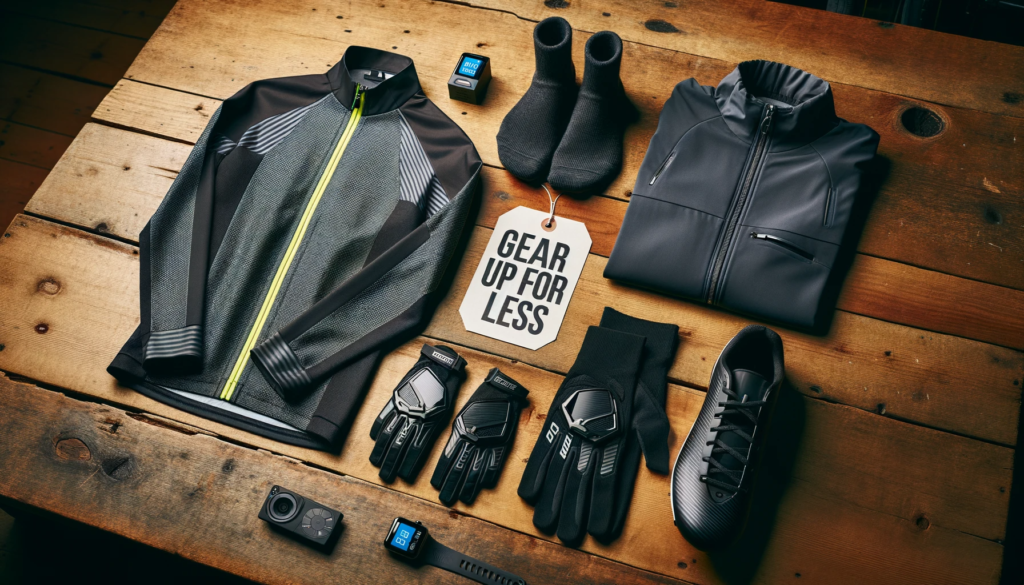Bicycle helmet mirrors can be beneficial for cyclists, providing a convenient way to increase visibility and enhance safety on the road. These mirrors attach to the helmet and allow riders to see behind them without having to turn their heads, helping to prevent accidents and improve situational awareness.
The Benefits Of Bicycle Helmet Mirrors
Bicycle helmet mirrors are becoming increasingly popular among cyclists due to their convenience and safety benefits.
But, are these mirrors a worthwhile investment for cyclists seeking improved awareness of their surroundings on the road? Explore the benefits and considerations of incorporating a bicycle helmet mirror into your cycling gear.
– Safety Meets Convenience
These mirrors attach easily to helmets and allow you to have a better view of your surroundings without turning your head or taking your eyes off the road. This not only improves your awareness of potential hazards but also allows you to react more quickly to sudden changes in traffic or road conditions.
– Evolution Of Cycling Accessories
The rise of bicycle helmet mirrors is just one example of the evolution of cycling accessories . As more people take up cycling as a form of transportation and recreation, the demand for innovative and practical accessories has increased.
From high-tech GPS devices to simple yet effective mirrors, cyclists now have a wide range of accessories to choose from that can improve their safety, comfort, and overall experience on the road.
All in all, bicycle helmet mirrors are a practical and effective accessory for cyclists who want to improve their safety and convenience on the road. As the popularity of cycling continues to grow, we can expect to see more innovative and useful accessories like these emerge in the market. So, whether you’re a seasoned cyclist or just starting out, consider investing in a bicycle helmet mirror to enhance your cycling experience.
Comparing Visibility Solutions For Cyclists: Traditional Bike Mirrors Vs. Helmet Mirrors
To enhance awareness of what’s happening behind you, two popular visibility solutions are traditional bike mirrors and helmet mirrors. Each comes with its pros and cons. Let’s compare them to help determine which might be the better option for your needs.
Traditional Bike Mirrors
Bike mirrors are typically mounted on the handlebars or near the brake levers, offering a wide view of the road behind. They come in various sizes and styles, from compact designs to larger, more conspicuous mirrors.
Advantages:
- Stable Positioning: Mounted on the bike, traditional mirrors remain fixed, providing a consistent field of view without adjusting to head movement.
- Larger Mirror Size: Traditional mirrors often have more surface area, allowing for a broader and clearer view of the surroundings.
- Hands-Free Use: Since these mirrors are fixed to the bike, you don’t have to make adjustments while riding. Once positioned, they function automatically.
- Variety of Mounting Options: You can choose the location that works best for your comfort and line of sight, whether on the handlebars or elsewhere on the bike frame.
Disadvantages:
- Potential for Vibration: Depending on the quality of the mirror and bike, rough roads or high speeds can cause vibrations that blur the image.
- Vulnerability: Handlebar mirrors can be more exposed and prone to damage during falls or collisions. They may also get knocked out of alignment easily.
- Limited View in Certain Situations: When riding in a group or in certain traffic situations, objects like other cyclists or parked cars can obscure the view provided by handlebar mirrors.
Helmet Mirrors
Helmet mirrors are attached to the side or visor of a cyclist’s helmet, providing a rearward view aligned with head movements. These small mirrors are lightweight and adjustable, offering a flexible alternative to bike-mounted mirrors.
Advantages:
- Adaptable Viewing Angle: Helmet mirrors move with your head, allowing you to adjust the view simply by shifting your gaze or turning your head slightly.
- Reduced Vibration: Since the mirror is mounted on your helmet rather than your bike, it’s less affected by road vibrations or bumps, offering a clearer image in rough conditions.
- No Impact on Bike Handling: Unlike handlebar mirrors, helmet mirrors don’t interfere with your bike’s aerodynamics or add weight to the frame.
- Good for Off-Road and City Riding: Helmet mirrors offer a consistent rear view regardless of terrain, making them particularly useful for mountain biking or navigating congested areas.
- Improved Safety: Helmet mirrors enable cyclists to see approaching vehicles, pedestrians, or other cyclists from behind, reducing the risk of accidents and collisions.
- Increased Visibility: By using a helmet mirror, cyclists can easily monitor their surroundings and make informed decisions about their movements on the road.
- Effortless Monitoring: With a quick glance into the mirror, cyclists can check for oncoming traffic or assess the distance and speed of vehicles approaching from behind, all without taking their eyes off the road ahead.
- Enhanced Confidence: Having a clear view of the road behind them instills confidence in cyclists, allowing them to focus on their ride and enjoy the journey.
Disadvantages:
- Smaller Mirror Size: Helmet mirrors are usually quite small, providing a limited field of view. This may require more frequent head movements to get a complete picture of what’s behind you.
- Dependent on Head Movement: Helmet mirrors require you to adjust your head position to maintain an optimal view, which can be distracting for some riders, especially during intense cycling
- Adjustment Challenges: It may take some time and effort to properly adjust the mirror to the cyclist’s preferred viewing angle, and it may require periodic readjustment due to vibrations or movements during the ride
- Additional Weight: The addition of a helmet mirror adds extra weight to the cyclist’s helmet, which may be noticeable during longer rides.
Which Is Right for You?
-
Traditional Bike Mirrors are best suited for riders who prefer a broader, stable field of view with minimal head movement and have a bike that’s mostly used on smooth roads or predictable terrain. These mirrors are ideal for commuting and road biking in less crowded or straightforward routes.
-
Helmet Mirrors, on the other hand, are excellent for cyclists who need flexibility and adaptability, particularly those riding in variable conditions, such as mountain biking or city riding. If you’re concerned about vibrations or prefer a minimalist setup on your bike, helmet mirrors might be a better option.
Design And Ergonomics of Helmet Mirrors
Bicycle helmet mirrors can enhance safety by providing better visibility for riders. The design and ergonomics of these mirrors play a crucial role in ensuring convenience and effectiveness during cycling. Riders can benefit from improved awareness of their surroundings, making bicycle helmet mirrors a practical accessory for a safer ride.
When it comes to bicycle helmet mirrors, design and ergonomics are crucial factors to consider. A well-designed mirror should be easy to install, adjust, and provide a clear view of the road behind you. Additionally, it should not interfere with your helmet’s fit or obstruct your vision.
– Mounting Mechanisms
The mounting mechanism of a bicycle helmet mirror should be simple yet effective. Most mirrors come with a clip-on or strap-on mechanism that attaches to the helmet’s visor or strap. Some mirrors also come with an adhesive backing that allows for a more permanent attachment. Regardless of the mounting mechanism, it should be sturdy enough to hold the mirror in place during rides.
– Adjustability And Stability
Adjustability and stability are two critical aspects of a good bicycle helmet mirror. The mirror should be adjustable so that you can position it to provide the best view of the road behind you. It should also be stable enough to stay in place during rides, even when going over bumps or rough terrain.
A wobbly or unstable mirror can be distracting and even dangerous. In conclusion, when looking for a bicycle helmet mirror, consider the design and ergonomics, mounting mechanisms, adjustability, and stability. A well-designed and adjustable mirror that mounts securely to your helmet will provide a clear view of the road behind you, making your rides safer and more enjoyable.
User Experiences And Testimonials
When it comes to making a decision about whether bicycle helmet mirrors are effective, user experiences and testimonials play a crucial role.
Hearing firsthand accounts from cyclists who have used helmet mirrors can provide valuable insights into their effectiveness and practicality. Additionally, learning about safety incidents and prevention measures from real-life experiences can help cyclists make informed decisions about whether to invest in a helmet mirror.
Firsthand Accounts
Firsthand accounts from cyclists who have used helmet mirrors often highlight the convenience and improved visibility that these accessories offer. Many users report feeling safer and more confident while navigating traffic and keeping an eye on their surroundings. Some cyclists also share how helmet mirrors have helped them anticipate potential hazards and make timely adjustments to their riding position.
Safety Incidents And Prevention
While helmet mirrors can enhance visibility and safety for cyclists, it’s important to consider potential safety incidents and how they can be prevented. Users may share their experiences of avoiding collisions or being able to respond quickly to unexpected situations due to the use of helmet mirrors. Understanding how these accessories can contribute to accident prevention is crucial for cyclists looking to prioritize safety on the road.

Credit: www.amazon.com
Installation And Maintenance Tips
When it comes to ensuring the safety and convenience of your cycling experience, the installation and maintenance of your bicycle helmet mirror play a vital role. Properly setting up and taking care of your mirror can significantly enhance your visibility and overall riding experience.
Here are some essential tips for installing and maintaining your bicycle helmet mirror.
Setting Up Your Helmet Mirror
Before installing your helmet mirror, ensure that the surface of your helmet is clean and dry. Choose a suitable location on the helmet’s surface, typically the left or right side, depending on your preference.
- Attach the mirror securely using the provided adhesive or mounting hardware, following the manufacturer’s instructions closely.
- Adjust the mirror to your preferred angle for optimal rear visibility. Ensure that it is firmly in place before riding.
Keeping Your Mirror In Top Shape
- Regularly inspect the mirror and its mounting to check for any signs of wear or damage.
- Clean the mirror with a gentle glass cleaner and a soft cloth to maintain optimal visibility.
- Avoid using harsh chemicals or abrasive materials that could damage the reflective surface.
- Check the tightness of the mounting hardware periodically to prevent the mirror from becoming loose while riding.
Making The Choice: To Mirror Or Not To Mirror
Bicycle helmet mirrors offer added visibility and safety on the road. With their compact design and easy installation, they provide cyclists with a convenient way to monitor their surroundings without turning their heads. Whether you choose to use one or not, it’s worth considering the benefits they can offer for a safer riding experience.
Assessing Your Cycling Needs
- Consider your comfort and safety while cycling.
- Determine if you need additional visibility.
- Assess your riding conditions and habits.
- Think about the level of convenience you desire.
Alternatives To Helmet Mirrors
- Handlebar mirrors offer another viewing option.
- Rearview cameras provide high-tech visibility.
- Mirrorless riding can promote greater awareness.
Frequently Asked Questions
Are Bike Helmet Mirrors Any Good?
Yes, bike helmet mirrors are a useful accessory for cyclists. They provide a clear view of what’s behind you without having to turn your head, improving safety and awareness on the road. However, it’s important to choose a high-quality mirror that’s properly adjusted to ensure maximum effectiveness.
Do Bicycle Rear View Mirrors Work?
Yes, bicycle rear view mirrors work by providing visibility to the rider of what’s behind them.
What Is The Difference Between Blue And Silver Bike Mirrors?
Blue bike mirrors have a blue tint that reduces glare and helps improve visibility in low-light conditions. Silver bike mirrors have a reflective surface that provides a clear view of the surroundings. The choice between the two depends on personal preference and riding conditions.
Should You Put Mirrors On Your Bike?
Yes, putting mirrors on your bike is important for increased safety and awareness of your surroundings while riding. Mirrors help you monitor traffic and make informed decisions on the road.
Are Bicycle Helmet Mirrors Effective For Safety?
Yes, bicycle helmet mirrors are effective for increasing safety by providing a clear view of traffic behind the rider.
Conclusion
Bicycle helmet mirrors can offer significant benefits for cyclists. They provide improved visibility and awareness of surrounding traffic, reducing the risk of accidents. While they may take some time to get used to, once mastered, they become an invaluable tool for cyclists of all levels.
So, if you want to enhance your safety on the road, investing in a bicycle helmet mirror is definitely a good idea. Happy cycling!




